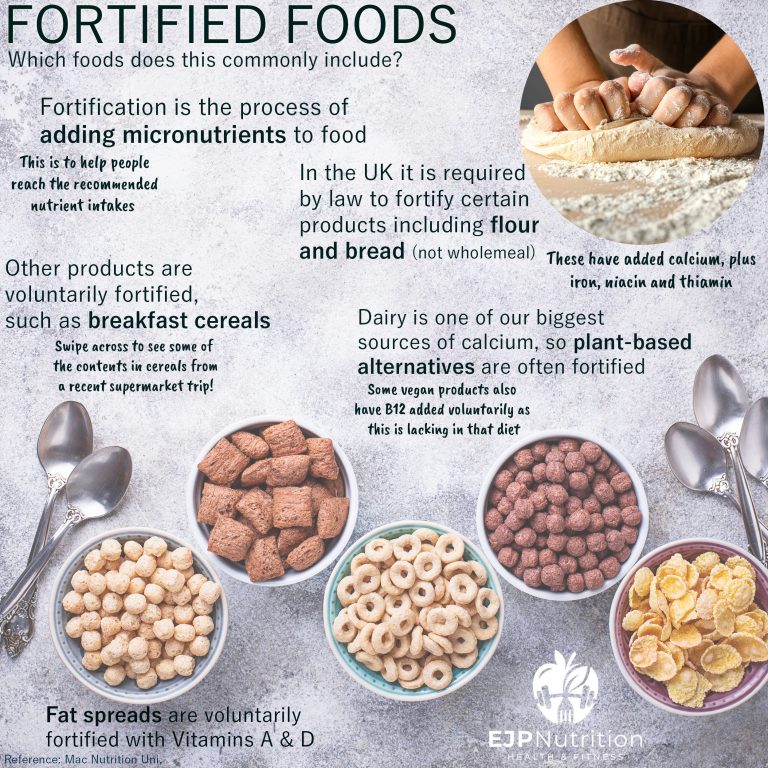Put simply fortified foods are when certain nutrients are added into them. This can be because its required by law (in the UK this applies to white bread) or voluntarily by the food manufacturer.
Some of the most common examples of fortified foods are flour, spreads and cereal. This is because these foods are such staples in the diets of both adults and children, so it helps increase nutrient intake on a large scale.
I’ve talked at length before about how a balanced and varied diet is optimal for health. The variety of vegetables and fruit especially helps cover lots of the micronutrients required. But if you don’t have that variety it may be your breakfast cereal is helping top up what you need.
That’s why telling someone to switch out their coco pops might not be helpful as you think. Depending on what they are replaced by, sometimes keeping in the fortified product might be a better option.
Mandatory Fortification
In the UK the Bread and Flour Regulations 1998 require the fortification of non-wholemeal wheat flour. It needs to be fortified with calcium (for health), and to restore the nutrients lost during the milling process with iron, niacin (vitamin B3) and thiamin (B1). Interesting there is an ongoing consultation for the government to consider adding folic acid to the mandatory fortification of flour. This would be to reduce neural tube defects in pregnancy, and it is already in place in some other countries.
Fat spreads provide vitamins A and D from their voluntary fortification. Cereals are also commonly fortified with a range of micronutrients. The national diet and nutrition survey (NDNS) found that breakfast cereals contribute 20% of the average iron intake of British adults, 29% in boys and 23% in girls and 13% of the average daily vitamin D intake in adults, 20% in girls and 24% in boys.
To summarise fortified foods are an important part of our national diet. They’re to try and help people reach the recommended nutrient intakes, while reducing deficiencies. A lot of foods with fortification are commonly consumed products and therefore present in most of our diets.
References: Mac Nutrition Uni, Gov.uk, British Nutrition Foundation.
(Reposted from Instagram)
Extra note: Its estimated 90% of people consume products that contain flour. With that much consumed any fortification has to be assessed against potential negatives from high intakes. High amounts of folic acid for example can mask vitamin B12 deficiencies. Some micronutrients affect the absorption of others too, such as calcium can reduce the absorption of iron. So you can see it can get a little complicated on what to fortify, and with how much!
More to follow on plant-based milk in my next post.



